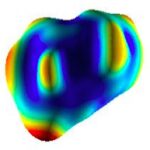Lien vers Pubmed [PMID] – 26459974
Semin. Cell Dev. Biol. 2015 Oct;46:128-34
Entamoeba histolytica, the causative agent of amoebiasis, is a protozoan parasite characterised by its amoeboid motility, which is essential to its survival and invasion of the human host. Elucidating the molecular mechanisms leading to invasion of human tissues by E. histolytica requires a quantitative understanding of how its cytoskeleton deforms and tailors its mode of migration to the local microenvironment. Here we review the wide range of methods available to extract biophysical information from amoeboid cells, from interventional techniques to computational modelling approaches, and discuss how recent developments in bioimaging and bioimage informatics can complement our understanding of cellular morphodynamics at the intracellular level.




